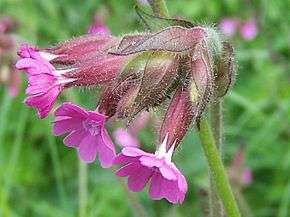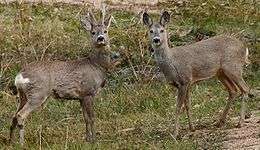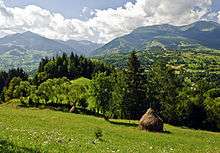Dumbrava Sibiului Natural Park
The Dumbrava Sibiului Natural Park (Romanian: Parcul Natural Dumbrava Sibiului) (natural park category V IUCN) is a protected area situated in central Romania, in Sibiu County, in administrative territory of Sibiu city.[4]
| Dumbrava Sibiului Natural Park | |
|---|---|
| Parcul Natural Dumbrava Sibiului | |
IUCN category V (protected landscape/seascape) | |
Dumbrava Sibiului Natural Park (lake) | |
 Location within Romania | |
| Location | |
| Nearest city | Sibiu |
| Coordinates | 45.746°N 24.099°E[1] |
| Area | 96 hectares (240 acres)[3] |
| Established | 2000 |
Description
Dumbrava Sibiului Natural Park was declared a natural protected area by Law Number 5, of March 6, 2000.[5] It consists of a forest area (Dumbrava Forest) crossed by the Trinkbach River, forming on its course three anthropic-type lakes.[6]
The natural park was a favoured promenade location for inhabitants of Sibiu as early as the 18th century. It is known nowadays for the ASTRA National Museum Complex. The defunct tram line connecting Sibiu with Rasinari can also be seen from there. The Municipal Cemetery, opened in 1907, is located on the south side of the park's woods.[7]
Flora and fauna
Vegetation of forest

Species of trees: English oak (Quercus robur), sessile oak (Quercus petraea), European hornbeam (Carpinus betulus), elm (Ulmus), field maple (Acer campestre), European beech (Fagus sylvatica), linden (Tilia), pine (Pinus);
Species of shrubs: common hawthorn, common privet (Ligustrum vulgare), dog rose (Rosa canina), alder buckthorn (Rhamnus frangula), blackthorn (Prunus spinosa).
Species of grass: great willowherb (Epilobium hirstum), wall letuce (Lactuca muralis), red campion (Melandium rubrum), autumn crocus (Colchicum autumnale).[8]
Fauna
Species of mammals: roe deer (Capreolus capreolus), fox (Vulpes vulpes), wild boar (Sus scrofa), squirrel (Sciurus carolinensis);
Species of birds: sparrow (in family Emberizidae), Eurasian jay (Garrulus glandarius), woodpecker (family Picidae), blackbird (Turdus merula), common chaffinch (Fringilla coelebs), turtle dove (Streptopelia turtur), common raven (Corvus corax), common cuckoo (Cuculus canorus).[9]
External links
- (in Romanian) ecomagazin.ro - Dumbrava Sibiului Natural Park
References
- eunis.eea.europa.eu - Dumbrava Sibiului Natural Park; retrieved on June 01, 2012
- eunis.eea.europa.eu - Dumbrava Sibiului Natural Park; retrieved on June 01, 2012
- (in Romanian) apmsb.anpm.ro - Regional Environmental Protection Agenty Sibiu; retrieved on June 01, 2012
- protectedplanet.net - Dumbrava Sibiului Natural Park; retrieved on June 01, 2012
- (in Romanian) cdep.ro - Law No.5 of March 6, 2000; retrieved on June 01, 2012
- "Junge Wald".
- "DUMBRAVA SIBIULUI NATURAL PARK". Archived from the original on 2012-09-10.
- spontana.robustit.com -Speciesof flora in Romania Archived 2012-06-06 at the Wayback Machine; retrieved on June 2, 2012
- (in Romanian) enrin.grida.no - Flora and fauna of Romania Archived February 23, 2009, at the Wayback Machine; retrieved on June 2, 2012
Images gallery

 Male and female roe deer
Male and female roe deer

